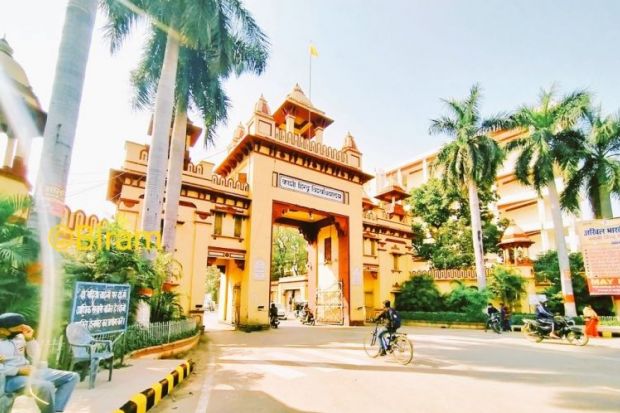Indian universities, which are finally physically reopening after a gruelling 10 months of closures, are looking ahead to a drastically changed post-Covid landscape.
They have been tasked with playing a more “proactive role” in public health, especially as a countrywide vaccination campaign begins on 16 January. Many have also fundamentally changed the way they teach, after nearly a year of online instruction.
Guidelines from the University Grants Commission (UGC) say researchers, STEM postgraduates, medical students and final-year undergraduates should be given priority for return, although campuses can be filled only to half-capacity. The remaining students will continue learning online, as they have been doing since last March, although digital access is still patchy across the nation.
The UGC has left reopening decisions to individual states and institutions. However, a growing number of news reports are showing campuses welcoming back students, as the country has flattened the curve from about 100,000 to 15,000 Covid infections per day. Face-to-face classes have resumed from Rajasthan in the north, Kerala in the south, Odisha in the east, to Maharashtra in the west.
Rajnish Jain, the UGC secretary and chief vigilance officer, wrote a letter to vice-chancellors and principals seeking their “personal intervention” in promoting vaccines and helping in public health communications. “Universities have an important role to play through their networks and other platforms,” he wrote.
The Kalinga Institute of Industrial Technology, widely known as KIIT University, had already been part of the pandemic response, having opened four hospitals in Odisha as well as an on-campus clinic for mothers and children.
Sasmita Samanta, KIIT’s pro vice-chancellor, told Times Higher Education that medical, nursing and dentistry staff were on campus. However, she said, most teaching would remain virtual as the institution had successfully moved its courses and exams online during the beginning of the lockdown.
She said the digital shift “made the academic system more flexible” and increased “exposure and engagement with international experts”.
“It is expected that after the pandemic is over, the ‘new normal’ will facilitate the country’s educational institutions in working with more flexibility and with a global perspective,” she said.
Pankaj Mittal, secretary general of the Association of Indian Universities (AIU), which has more than 800 university members, told THE that “we hope that universities will open soon”.
She and C. Raj Kumar, vice-chancellor of O.P. Jindal Global University, have published an 80-page Covid-19 Response Tool Kit with step-by-step instructions on safe reopening. Actions include restructuring classrooms, shared spaces and even course schedules to allow for social distancing. Campuses need to require testing, use online health forms and set up quarantine spaces, the document advises.
“The population density of campuses makes them vulnerable to outbreaks,” the authors write.
Dr Mittal told THE that other lessons had been learned during nearly a year of lockdown.
“The digital divide was clearly visible,” she said. “The government and universities are now trying to bridge the gap by heavily investing in technology.”
AIU worked with Qaspir, a higher education consultancy, to develop Qedex, a teacher training platform. “Our teachers were [initially] not trained on how to teach online,” Dr Mittal said. “However, I must compliment them for very quickly responding and learning new techniques.”
She said the crisis presented “multiple opportunities” for change.
“Blended forms of learning – including online teaching, which was not picking up for a long time – picked up all of a sudden,” she said. “The technology was upgraded. Teachers as well as students learned new skills, and the flipped classroom model of teaching was adopted by many universities. Good-quality OERs [open educational resources] were produced.”
Still, Dr Mittal emphasised the importance of human relationships, not just technological solutions.
“The connections between students and teachers – even if they are virtual – should be strengthened until normalcy restores,” she said, urging universities to increase counselling and cultural activities.
Professor Kumar told THE that O.P. Jindal was staying in “virtual mode” for now. The private institution, which shifted online almost immediately after the lockdown began, has completed more than 20,000 classes online over two semesters. The tools it developed – including a digital library, an AI-enabled examination system and 24-hour counselling support – meant that there was less rush to return while public health concerns remain.
Meanwhile, the institutions was adapting its physical infrastructure to ensure that the campus is safe for the return of students – something Professor Kumar is looking forward to.
“I have personally always fed off the energy of my students and my faculty members and thrived in their presence on the campus,” he said. “While working in an online format has allowed us to stay connected, it has also established the value of the physical classrooms and the importance of students and teachers being on campus for a holistic teaching and learning experience.”
joyce.lau@timeshighereducation.com




